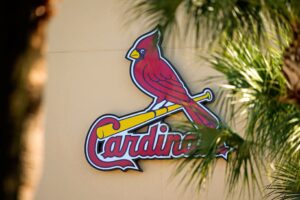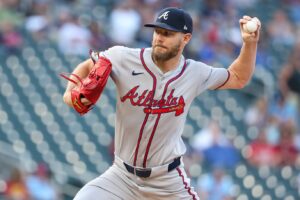The best wins come when you least expect them. Too many, however, raise expectations to a place where they become the expectation, not a pleasant surprise. Like fans, general managers and other upper-management types can fall prey to the decoy of unexpected wins. And that leads to a heightened (and false) sense of how good a team is. So many bad signings and trades come from a team trying to artificially rise into contenders. Rebuilding MLB teams must stay true to their long-term plan; not try to test Father Time by turning the clock ahead before it’s ready.
Successful, Rebuilding MLB Teams Proceed with Caution
This season, while still very early on, has produced a plethora of teams that qualify as surprises. Here, we’ll take a look at the risk they run of using this season’s small sample size to justify knee-jerk moves that have a high potential to fail. And failing can not only undo the progress made, but can also cost players, managers, and GMs their jobs. For rebuilding MLB teams, being good can be bad.
If teams can win with what they have, more power to them. Rebuilding MLB teams overachieving is cause for celebration. This is not meant to deter winning. Rather, this is a warning: If you’re a fan of these teams, proceed with caution. Reaching too far for too much can do more harm than good. Even if all is done with good intention.
New York Yankees
The New York Yankees, based on history, are probably the most susceptible team on this list in getting too greedy this season. The Yankees have worked for years to get younger and rid themselves of bad contracts. They’re almost there. With C.C. Sabathia’s contract still on the books, it’s hard to argue they’re all the way there. New York has, however, done a fantastic job of restocking their farm system. Between Greg Bird, Gary Sanchez, and Ronald Torreyes, the Yankees have a new lease on life; a foundation that offers something in the way of a replication to what brought them their last dynasty. That being their “Core Four” of homegrown talent, consisting of Derek Jeter, Mariano Rivera, Andy Pettitte, and Jorge Posada.
This is how it could all come crashing down: Hypothetically, say the Yankees are competitors to make the playoffs, and suffered an injury at first base or DH. To make a late-season push, trading for someone like Albert Pujols might seem attractive in the moment. If something like that were to happen, though, New York would betray their long-term plan. And put themselves right back in a place where they’re saddled with bad/unmovable contracts. That’s how fickle these things are.
Oakland A’s
The A’s are widely regarded as one of the smartest front offices in MLB, and rightfully so. They, however, are not immune to make moves that backfire. Remember when they “went all in” and traded Addison Russell, Dan Straily, and Billy McKinney for 11 Jeff Samardzija starts and eight from Jason Hammel (in which he went 2-6)? They also made a Yoenis Cespedes-for-Jon Lester trade. Lester made 10 starts for the A’s (plus one in the AL Wild Card game). That move would seem less bad, given that no top prospects were given up. Until you consider that that move also consisted of Oakland surrendering their competitive balance draft pick to Boston. And the A’s are as dependent – if not more – on those picks than any other MLB team.
In combination, those moves are perfectly symbolic of the point in all of this. In the moment, emotion takes over and going for it is all that matters. Until it all backfires because the baseball playoffs are random. And the devil comes looking for the soul he was promised.
Oakland is uniquely positioned in the MLB landscape in that they always have to have one eye three years down the road, because they’re so cash-strapped compared to every other team. For a moment, they blindfolded their future eye, and it cost them prospects that could have provided today’s team with elite-caliber talent at positions of need.
Cincinnati Reds/Milwaukee Brewers
These two teams (and the next two) are combined because they play in the same division. Thus, their situations largely overlap.
The Brewers and Reds have both experienced more success than most expected so far. Both have achieved said success mainly through their offensive production, rather than by pitching dominance. In runs scored, as of this writing, the clubs are behind only the Arizona Diamondbacks and Washington Nationals. That would seem more to do with small sample size rather than something that could sustain itself through the balance of the season.
The NL Central is still the Chicago Cubs’ division. And history would suggest the St. Louis Cardinals won’t struggle all season. So the Reds and Brewers (like other rebuilding MLB teams) have to be honest with who they are, and what their long-term goals are. But Cincinnati and Milwaukee, specifically, have to exercise extra vigilance. Because the competition in their division provides challenges other teams on this list don’t have. At least not to the same extent.
Colorado Rockies/Arizona Diamondbacks
The Arizona Diamondbacks have already built a relatively healthy lead in the runs scored category (They’re at 103, with the aforementioned Yankees at 91, and the Tampa Bay Rays in third at 89). If their upper-management thinks that can hold up through the season, they may provide the most likely team on this list to make in-the-moment moves because they’ve already sacrificed much of their farm system and financial flexibility in previous trades and signings – [cough] Zack Greinke is still owed $172 million [cough].
Much of the same applies to the Colorado Rockies. Except the Rockies have a bit more young talent on their roster. Mainly in the form of Trevor Story and Antonio Senzatela.
By contrast, Arizona has Yasmany Tomas and Taijuan Walker. But Tomas, coming from Cuba, was able to negotiate a contract on his terms (which includes an opt out after this season or two more years under contract). And Walker is already halfway through his team-controlled years, by virtue of making his MLB debut at age 20 for the Seattle Mariners. So the Diamondbacks’ prized young players are significantly ahead of where their age group typically is contractually.
Colorado has a pretty attractive collection of veterans and young up-and-comers. But teams in a similar spot have mismanaged their team(s) plenty of times before. With Carlos Gonzalez getting older, and Nolan Arenado eyeing free agency after next season, the Rockies might have to gamble this season if they continue to look down on the rest of the division in the standings.
Not the Only Ones
Other teams to make this list, as well. However, the teams on this list would sacrifice their long-term plans if they were to make a play for the World Series this season and give up some prospects in the process. That differs from, say, the Baltimore Orioles (who could have made this list). The Orioles, more than teams found here, are built for the present. Parting with prospects to add in-season talent wouldn’t feel like as much of a betrayal of a bigger plan with Baltimore as it would teams within this article.
Major League general managers have crazy jobs, especially for rebuilding MLB teams. As fans, we consistently judge GMs by results (in hindsight), rather than procedure. The latter is the better way, but the former more widely accepted. Bad procedure can still produce good results, and good procedure bad results. Likewise, bad long-term plans can produce good results. Good plans, bad results. But fans should hold GMs to their plans. Because the plans that are most susceptible to on-the-fly changes are the most vulnerable to failure.
Main Photo






